Service: PET Screen Codes
A tiny service for your retro development needs.
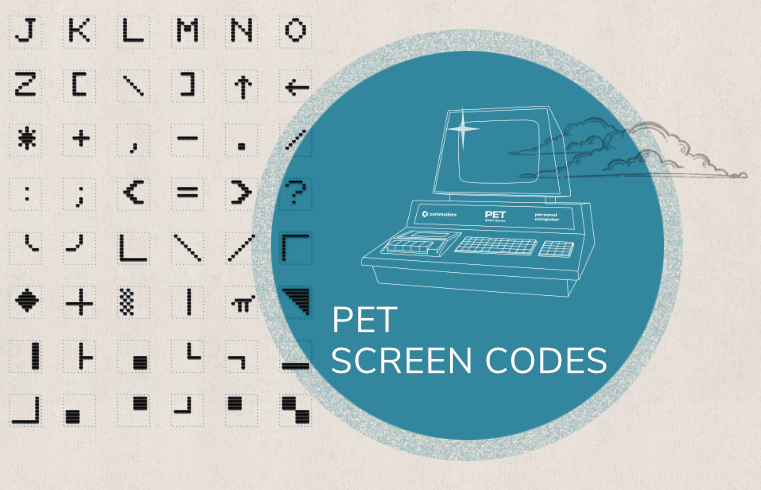
Picking up from where we left, last post, here are some charts of the PET Upper-Case/Graphics character set by screen code.
(Posts tagged “petscii“. All posts. RSS feed: Subscribe.)
A tiny service for your retro development needs.

Picking up from where we left, last post, here are some charts of the PET Upper-Case/Graphics character set by screen code.
Curious adventures in (Commodore) BASIC tokenizing.
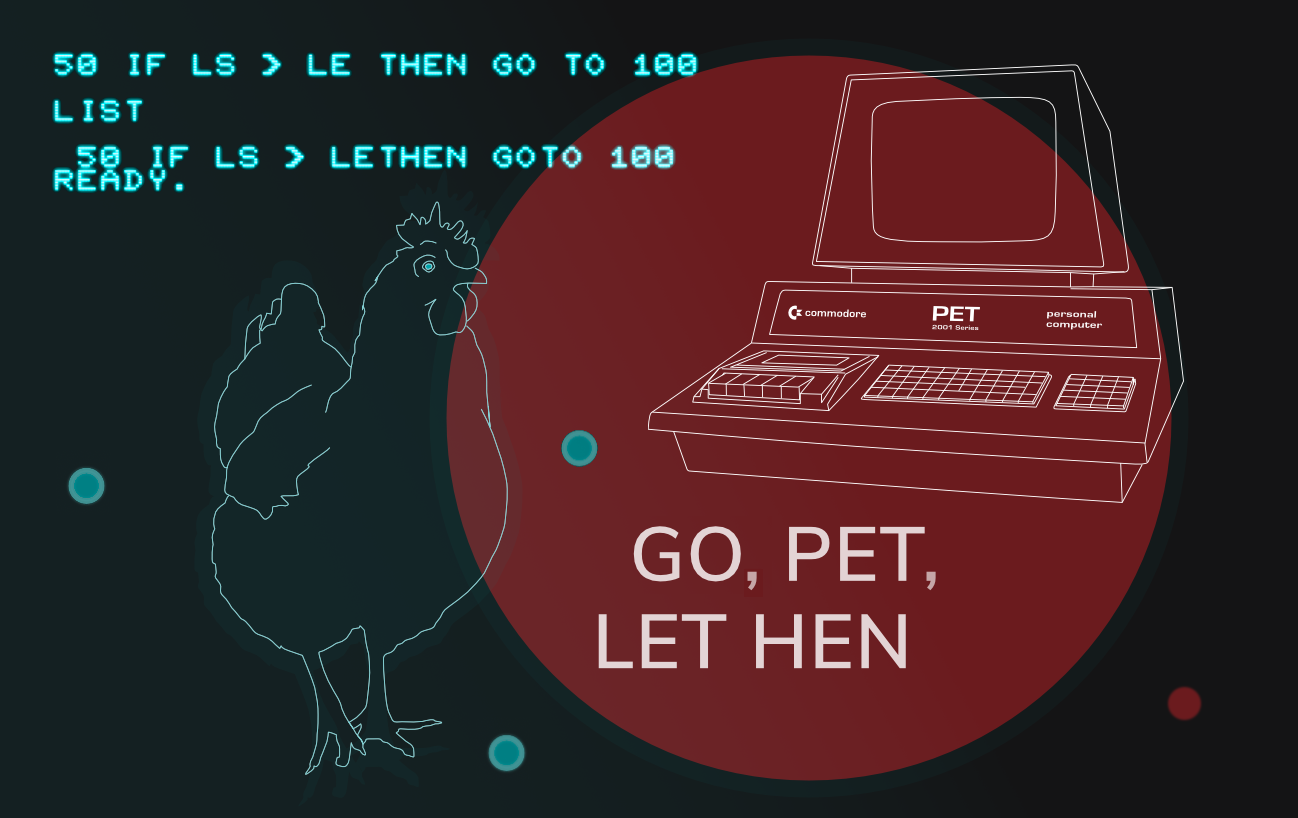
No, this is not about a one-hit-wonder from the charts of 1977, rather, it is about something that could have happened on a Commodore PET around this time. For this installment, it’s all about #BASIC tokenizing, and, as this promises some #6502 fun, we really ought to investigate…
More debugging options for the PET 2001 emulator.

There are times when your 6502 code doesn’t behave, where it steers off of its path into directions, never intended, when it runs away.
The new debugging traps for the PET 2001 emulator are meant for exactly those times. And they may be helpful for reverse engineering, as well.
Simply put, they are for those “How did we end up here?” moments. And the “Holy electron, Batman, what’s happening?” moments, as well.
An avidly spinning globe for the Commodore PET — and some bit-vectors.
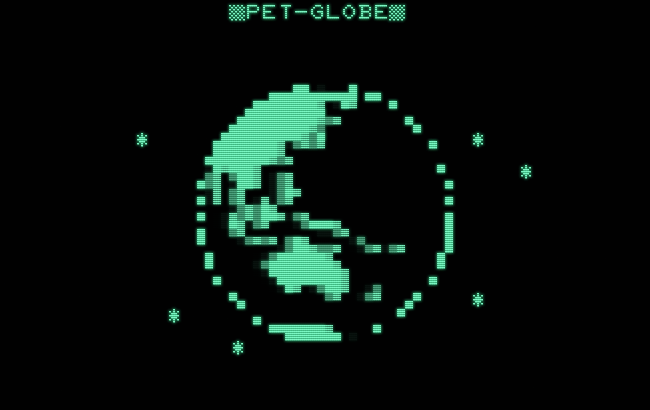
Well, another one…

(Foreshadowing not totally out of question, but also not guaranteed. I mean, the year isn’t even a day old! :-) )
It’s that time of the year, again…
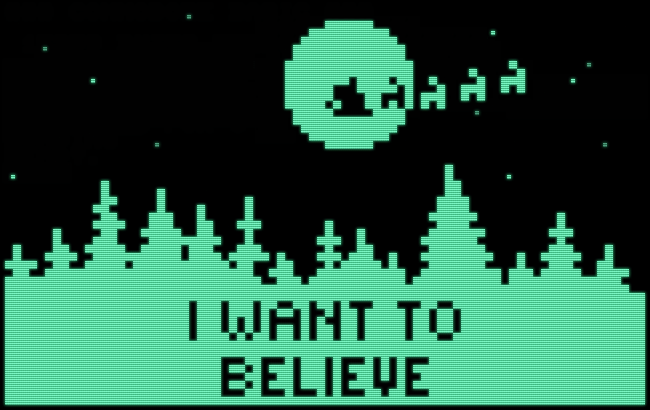
This year’s seasonal tribute: a PETSCII animation based on a popular cross-stitch pattern.
Users are kindly requested to imagine that trademark eerily fluttering 1950s UFO sound effect that I find hard to achieve on the PET’s “CB2” sound*.
>Emulation: run it online…
*) In case you were to ask, “What is CB2-sound?”
Well, the PET doesn’t feature sound, at all. But you can hook up a speaker to the output of a serial shift-register, creatively named “CB2”, which may be manipulated to output audible frequencies, sampling sound by a single bit at 1 MHz. This is CB2-sound.
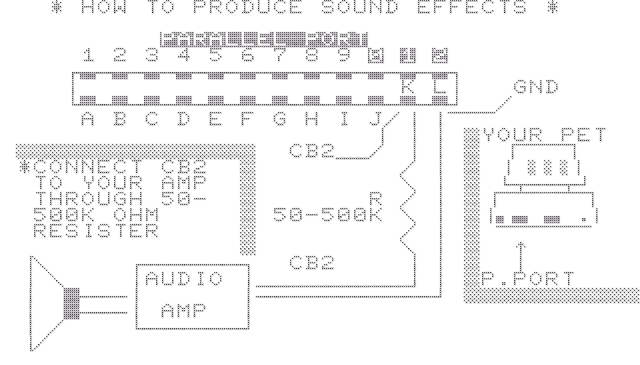
*****
The already tradional PET recreation of an animated screen of the 1982 Christmas Demo for the C64 has also received an update: it now fits into 4K of RAM and allows for easy updates, as the year is now stored in a dedicated variable at the very top of the BASIC program text.
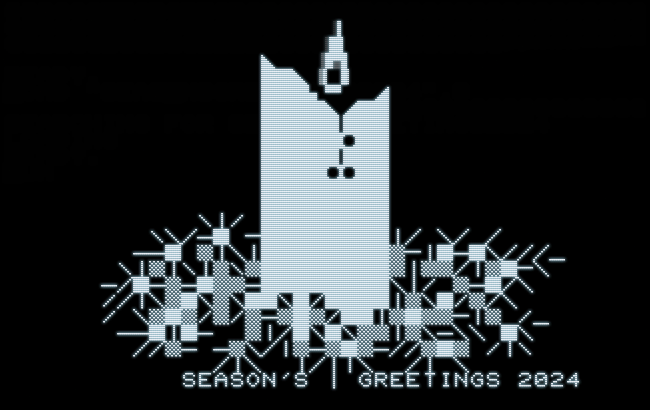
Y to zero to omit the output of the year entirely.)>Emulation: run it online…
The Japanese character ROM and keyboard come to the PET 2001 emulator.
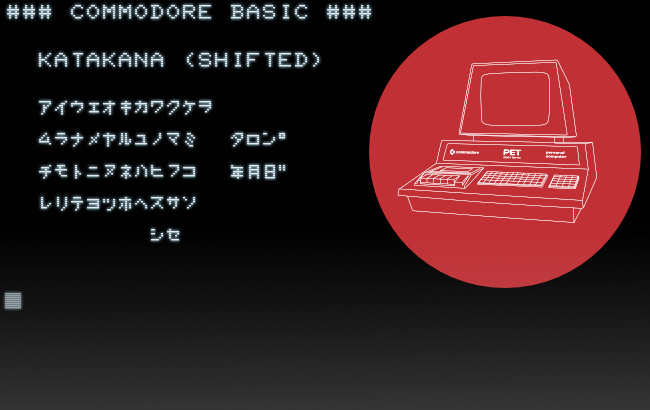
Another update to the PET 2001 emulator, spefically, a tribute to Japan and its importance to home computing history in general, and its role for Commodore in particular.
A new game for the Commodore PET, also, how to detect keyboards on a Commodore PET.

Rumors that I am might be writing a game (or is it a playable joke?) are not entirey unfounded. Also, another (maybe helpful) note on PET keybords and how to detect them.
A closer inspection of the keyboard(s) of the PET 2001.

Where we investigate the PET keyboard, have a closer look at the keyboard matrix of the various layouts found on the PET 2001 and later PETs, as well, and even have a bit of 6502 fun.
Update: Now with code examples!
A closer look at the logic behind Commodore ASCII, AKA “PETSCII”, and the PET 2001.

The flavor of ASCII used by the Commodore 8 bit computers, commonly known as PETSCII, is asking for a bit of an explanation. PETSCII is a peculiar beast, close to ASCII, but not quite, somewhat compatible, but not really, there are duplicate ranges of characters all over the place, and the special characters are lacking any recognizable order… — But look at all these these funny graphics characters!
In order to make sense of this and how the character set is organized, it may be helpful to have a closer look at it with a particular focus on the PET 2001. At least, this is the very machine, this character set originated on and for which it was designed for, with no idea yet that this may become the ancestor of a succesful line of home computers. Here, we may discover logic, in what must remain a puzzling enigma on the more popular and better known machines that followed, like the C64.